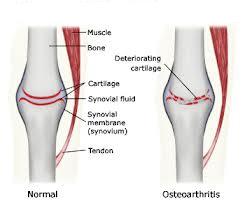[su_divider top=”no” style=”double” divider_color=”#952524″ link_color=”#952524″ size=”2″ margin=”10″]
Osteoarthritis? Degenerative Arthritis? Discoid Eczema? What is this? What causes this problem? Is it curable? What are the signs and symptoms? How can homeopathy help you? All of this and more answered, in this post and of course our doctors always there to help you. Just fill in your details in the form down below and we will answer all your questions for FREE!
[su_divider top=”no” style=”double” divider_color=”#952524″ link_color=”#952524″ size=”2″ margin=”10″]
[sc name=”query”]

What is Osteoarthritis?
– It is an inflammatory disease of the joints which results in the degeneration of the cartilage.
– It is also worn and tear on a joint, so it is known as “wear and tear arthritis”.
What age group affected due to this?
• Mainly the osteoarthritis symptoms appear in middle age.
• Osteoarthritis appears equally in men and women before the age of 55.
• But after 55 age group, it is more commonly present in the females.
• Approx. 60% of cases result from genetic factors.
What are the causes of Osteoarthritis?
The main causes of osteoarthritis are:
• Overweight increases the risk of osteoarthritis in the hip, knee, ankle, and foot joints.
• In case of joint fracture and injury to the bone.
• Person-job which involves:
– Regular lifting,
– Sitting in a squatting position.
• Bleeding disorders as a Haemophilia condition.
• Injury to joints
• Family history
• Infection of the body
• Muscle weakness
• The sedentary lifestyle is also the cause.
What are the risk factors?
• Older age: The risk of osteoarthritis increases with age.
• Sex. Women are more likely to develop osteoarthritis.
• Obesity: Extra body weight also increases the risk of osteoarthritis. Due to overweight stress on weight-bearing joints.
• Any Joint injuries such as trauma any accident may increase the risk of osteoarthritis.
What are the stages of osteoarthritis?
There are 4 stages of osteoarthritis. These are:
• Stage 0- Normal
In this, the knee shows no signs of osteoarthritis, it is a normal condition and requires no treatment.
• Stage 1- also known as Minor osteoarthritis
– In this minor osteoarthritis, a patient develops minor wear & tear and bone spur growths at the end of the knee joints.
– Pain present in this stage and also discomfort.
• Stage 2 also known as Mild osteoarthritis
The space between the bones appear normal, people will begin experiencing symptoms of joint pain. And the area around the affected joints will feel stiff and uncomfortable.
• Stage 3 is also Moderate osteoarthritis
– It is a “moderate” type of osteoarthritis, in this almost all the symptoms it appears, where there is the obvious erosion of the cartilage surface between bones and fibrillation narrows the gap between the bones.
– In this, there is a frequent pain when walking.
• Stage 4 also Severe osteoarthritis
– It is a severe form of osteoarthritis. In this stage the joint space between the bones is considerably reduced, causing the cartilage to wear off, leaving the joint stiff and also result in greater pain and discomfort when walking or moving the joint.
What are the symptoms of Osteoarthritis?
Some of the following symptoms are:
• Pain and stiffness of the affected joint.
• The weakness of the body.
• Laziness.
• Easily fatigue.
• Morning stiffness of all over the body.
• Pain in the joint after repetitive use.
• Loss of flexibility of the affected part.
• Cracking noise present in the joints which folding and walking.
• Joints may be filled with fluid.
• Pains more in cold and humid weather.
• Osteoarthritis affects hand, spine, feet, hips, and knees.
• Smaller joints, such as at the fingers, there is the formation of hard bony enlargements.
How do you get tested for osteoarthritis?
• A physical examination, a complete history of the patient and family.
• X-ray of affected joints
• MRI
• Joint fluid analysis
• Bone scan
How to treat the case of Osteoarthritis?
• Physical work out can help improve muscle strength.
• Massage therapy may also help provide short-term pain relief.
• Splints and braces can sometimes support weakened joints.
• Surgery
• Arthroscopic surgery to trim torn and damaged cartilage
• Knee Replacement, Hip Replacement, Ankle Replacement
• Medications as anti-inflammatory drugs
• Joint replacement surgery (arthroplasty)
• Lubrication injections
What are the complications of the Osteoarthritis?
Some complications are:
• Complete breakage of cartilage which results in loose tissue material in the joint.
• Stress fractures
• Haemorrhage inside the joint
• Infection in the joint
• Pinched Nerve
• The death of bone known as osteonecrosis.
What is the differential diagnosis of Osteoarthritis?
• Fibromyalgia
• Gout and pseudogout
• Psoriatic arthritis
• Rheumatoid arthritis
• Ankylosing spondylitis
What is the prognosis?
• The prognosis of osteoarthritis patients depends on joints affected and the severity of the condition.
• Joint replacement surgery can have resulted in the best long-term outcome.
Can homeopathic medicines help in osteoarthritis?
Yes, homeopathic medicines can help in case of this condition, but it depends upon the severity of the case and person to person. Some homeopathic medicines which help in this case. These are:
• Kalmia lat.
• Ledum palustre
• Rhus Toxicodendron
• Ruta graveolens
• Bryonia
For more information, you can visit NHS and Wikipedia.
Osteoarthritis
[sc name=”more-links-diseases”]

